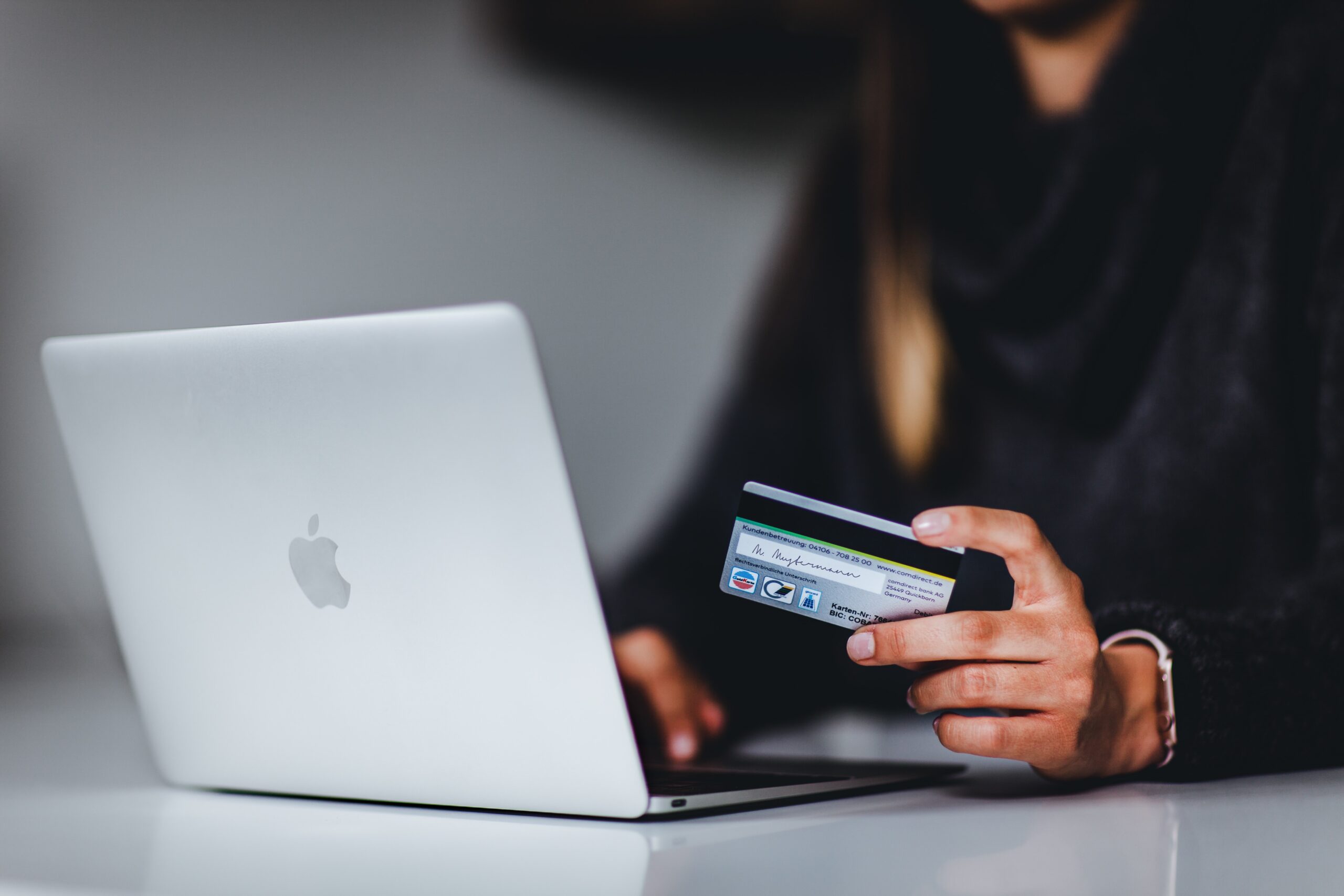These days, online shopping is a massive industry. In 2020, with the COVID-19 pandemic in full swing, online retailers earned over $4.2 trillion from just over two billion shoppers. Overall, the industry grew by about 25 percent, and the trend doesn’t seem to be slowing.
So, if you’re trying to sell products (e.g., clothing), the best way to do so is online. Fortunately, since we’re living in a golden age of e-commerce, it’s never been easier to set up a digital storefront. Even if you have a brick-and-mortar location, adding an online version helps you reach more customers and offer better convenience.

So, let’s dive into what it takes to set up an e-commerce fashion store.
Step One: Choose Your E-Commerce Platform
Thankfully, you don’t have to be a programmer to build an e-commerce website. Many providers can give you all the tools you need to develop a stunning storefront quickly. Some examples of e-commerce platforms include:
- Shopify – One of the most well-known platforms around, Shopify is pretty easy to master if you’re not familiar with websites or coding at all.
- WooCommerce – This company has overtaken Shopify with the largest market share for online retailers. The reason it’s surged recently is its intuitive tools and seamless integration.
- OpenCart – This smaller platform requires some light programming knowledge, but you can build a storefront pretty easily. OpenCart also caters to fashion stores with templates and stock images.
There are many more platforms out there, so you’ll have to find one that suits your particular needs. Here are some critical elements to pay attention to before making a final decision.
- Customer Service – Unless you’re a web designer, building your storefront can be relatively complicated. So, you want a platform that can walk you through the various steps it takes to make your site live. Ideally, you can call or chat with someone 24 hours a day.
- SEO Tools – Search engine optimization is essential for your storefront. Without SEO tools, you won’t be able to drive traffic and boost your sales.
- Security – Since you’re handling customer data, you have to ensure that your e-commerce platform is safe and secure. Look for options that include firewalls and other encryption services.
- Versatile Payment Options – Some customers want to pay with a credit card, while others prefer PayPal. Also, will you offer gift cards? Choose a platform that can handle multiple payment options so that you can serve your customers better.
- Data Analysis – Once your store is live, you need to be able to track sales and trends. Otherwise, how can you know which items to promote the most?
Step Two: Register Your Domain Name
If you’re unfamiliar with the term, a domain name is the main URL of your e-commerce site. An example of a domain name would be www.myfashionstore.com. In many cases, you should be able to register your company’s name as a domain. However, if you have a relatively generic name, it might be taken already. If that happens, you’ll have to get creative with your domain.
To purchase a domain name, you can find a reputable domain registrar online. You have to pay for a domain annually, although you can pre-pay for up to 10 years. Doing this helps you avoid potential issues if you forget to renew your domain later. In most cases, a domain name can cost less than $20 per year. However, if you have to buy the name from another company or individual, it could cost a lot more.
If you find out that your business name is already taken, here are some ways to get around this problem:
- Use Location Names – Let’s use My Fashion Store as an example. If that domain is already being used, you can try www.myfashionstoreCA.com or wherever you’re based. Then, if you expand into new states, you can buy domains for those locations. Or, you can switch to www.myfashionstoreUSA.com instead.
- Try Different Top-Level Domains (TLDs) – A TLD is the part that comes after your business name, such as .com or .net. So, if you can’t find a .com version of your domain, you can switch to something else. You can even use the TLD .fashion to illustrate that you have an apparel store. Another point to consider is that you might want to buy multiple TLDs for your site so that you can avoid copycats in the future.
Step Three: Setup Your Store
Now that you have an e-commerce platform and a domain name, you have to build your digital storefront. Doing this will take time and resources, but getting it right ensures that you can have a stable bottom line. Here are some tips on how to build a fashion e-commerce store from scratch.
- Add Product Listings – If you have your own inventory, you should take high-quality photographs of each of your top-selling items. If you have an extensive collection, it’s probably not feasible to have pictures of everything you sell, so focus on the most popular products. In addition to photos of the item itself, try to get a model to show off the piece.
- Add SEO-Rich Descriptions – Each product can act as its own landing page. So, be sure to use high-ranking keywords in both the product listing and the description. Doing this can help you increase your site traffic, and it can tell you which items are trending the most.
- Focus on Simplicity – Users don’t want to navigate through tons of pages to find what they want. In most cases, it’s better to have an “endless scroll” than it is to put items on separate pages. That said, if you can group different pieces based on their characteristics (e.g., tops, winter wear, accessories, etc.), that can help. Make each page as simple and streamlined as possible.
- Build an Intuitive Checkout System – As a rule, the fewer steps it takes for someone to check out, the more likely they’ll follow through. Be sure to have a “checkout as guest” option so that users don’t have to create a profile to buy something.
- Don’t Forget the “About Us” Page – What sets your e-commerce store apart from the rest? An About Us section allows you to connect with your customers on a more personal level. Describe what drives your business and the heart and soul behind your products.
Step Four: Brand Your Store
As you’re building your digital storefront, you need to figure out how you’re going to brand everything. If you currently have a logo, you need to digitize it so that you can put it on all your pages and product listings. However, don’t worry if you don’t have a logo yet – you can easily create a logo with an online tool, and get the perfect design for your business.
Before you get started, however, keep these branding elements in mind:
- Align Your Brand to Your Audience – Are you selling to fashionistas or single moms? Your core demographic should influence the style and tone of your brand.
- Use a Simple Color Scheme – Having a branded color palette enables you to create a cohesive website that blends well. You can also incorporate these colors into your marketing materials.
- Reinforce Your Brand – Make sure that your logo and business name are on each webpage, including product listings. This repetition and reinforcement can help customers recall your brand when they want to buy more clothes and accessories.
Step Five: Figure Out Shipping and Return Logistics
One of the biggest challenges for an e-commerce store is figuring out how to pack and ship items to your customers. Trying to do all of this yourself can be time-consuming, complicated, and costly. Fortunately, there are other ways to streamline this process so that it doesn’t affect your bottom line. Here are some options:
- Use a Dropshipping Service – Instead of maintaining inventory yourself, you can rely on a dropshipping company to store and ship all of your products. The downside of this option is that you can’t control product quality, nor can you take photos of each item yourself.
- Use a Fulfillment Center or Distribution Hub – In this case, you have to buy your own inventory and store it in a fulfillment center. There, workers will pack and ship your items as soon as an order comes in. As your stock runs out, it’s up to you to buy more.
- Use a 3PL Company – The easiest option is to use a third-party logistics provider. These companies can connect you with suppliers and distribution centers so that you can streamline your business. That said, 3PL companies can be costly, especially if you don’t have much revenue yet.
Step Six: Choose a Payment Provider
As we mentioned, it’s vital to have various payment options for your e-commerce store. So, you need to work with a high-quality payment provider to handle all of your transactions. Some examples include:
- PayPal – Most consumers have PayPal, and using it offers an extra layer of protection and security since you don’t store any financial information.
- Stripe – Many e-commerce businesses use Stripe to handle credit cards and other payment options. Another advantage is that customers stay on your site instead of going to PayPal.
- Amazon Pay – Since Amazon is the largest online retailer, it knows how to handle these transactions so you might want to check how to sell on amazon UK. The benefit of using Amazon Pay is that you get excellent fraud protection built-in.
Step Seven: Integrate Your E-Commerce Tools
Ideally, you should make your e-commerce storefront as similar to the actual experience as possible. Doing this involves utilizing various tools, such as:
- Live Chat – If a customer has a question or complaint, they can use the live chat to get an immediate response. You can also integrate AI chatbots that answer most simple questions (e.g., where do you ship to?).
- Shipping Tracker – Customers want to know when their package will arrive, so integrating a tracking service (i.e., from UPS) gives your customers better peace of mind.
- Reselling – You want to be able to reach out to customers after they’ve already purchased from you. Reselling tools enable you to connect with past customers to see how they like their product and whether they’re interested in buying another.
Step Eight: Figure Out a Marketing Plan
Once you’ve dialed in all the various components of your e-commerce store, now you have to promote it. Fortunately, there are multiple channels you can utilize for marketing, such as:
- Social Media – Connect with your audience and see how they’re using your products in their everyday lives. You can also host contests and giveaways on various platforms.
- SEO – Optimizing your site will help you rank higher in search results. Be sure to do as much keyword research beforehand so that you know which ones to optimize for.
- Branded Materials – You can spread the word about your storefront in person at events and conferences. There, you can hand out stickers, business cards, swag, and more.
As you can see, building an e-commerce business is relatively straightforward. As long as you follow these steps and put the effort in, you should be able to find an audience. Happy selling!






